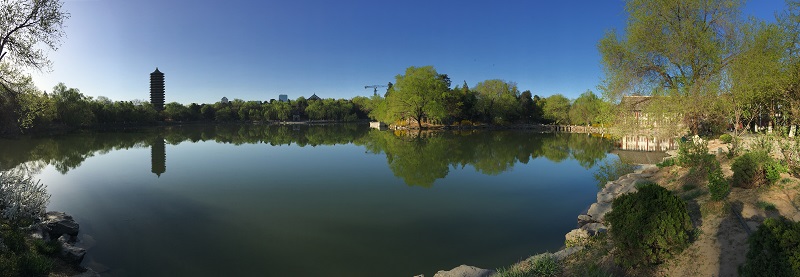
Associate Professor
Institute of Quantum Electronics
Research Interests: Free space optical communication
Office Phone: 86-10-6276 2772
Email: digitaltech[at]pku.edu.cn
Wang, Jianmin is an associate professor at the Schoolof Electronics, Peking University. He served as a faculty member at the Institute of Quantum Electronics since 2001. Dr. Wang obtained his B.E from Xi'an Technological University in 1990, M.E and Ph.D. from Harbin Institute of Technology in 1995 and 1998 respectively. His research interests include new type free space optical terminal design, optical communication key technology research, and ground-based verification and detection technology of free space optical communication.
Dr. Wang has published more than ten research papers in academic journals such as Optics Express, Optics Communications, and Optik. He has 9 patented inventions as the sole inventor or the first inventor to file.
As the project leader,Dr. Wang has undertaken national or ministerial level research projects, including the projects supported by National Natural Science Foundation of China.
Dr. Wang's research achievements are summarized as follows:
1) Proposed and developed a new kind of free space optical communication system with the function of star sensor. In the new system, the star sensor uses a common optical antenna with the optical communication function modules such as acquisition module, fine tracking module and communication module. Before course acquisition, open loop pointing direction of the optical terminal’s coarse pointing mechanical device is calibrated accurately by capturing several stars, so the course acquisition can be completed rapidly. The maximum acquisition time of ESA’s SILEX project is 180s, but the new system takes less than 10s. The new design method can be applied to various optical communication links such as inter-satellite, satellite-to-ground and aircraft-to-satellite. Rapid acquisition technology is very important for high-speed space communication internet.
2) Proposed a kind of new space light far-field optical transmission simulation method based carbon nanotubes or fiber probe. Traditional simulation method’s simulating distance is limited and cannot satisfy the requirements of the long distance optical communication(GEO-LEO optical link,Mars- Earth optical link etc.),but the new method can realize arbitrary distance optical transmission simulation. Not only can this new method be applied to free space optical communication but also laser ranging, laser lidar and other related fields, and has the advantages of high speed, simple structure, wide working band, and greater flexibility.
3) Proposed and designed a new system-level performance testing system of optical communication system that worked within the laboratory and the testing results were equivalent to those of space on-orbit. The new technology solved the problem of whole optical terminal system-level test in near distance. The new system can test the performance parameters of optical system such as acquisition time, acquisition probability, tracking-pointing accuracy and communication BER when considering the space background radiation, relative motion between satellites, atmospheric turbulence and satellite platform vibration.




